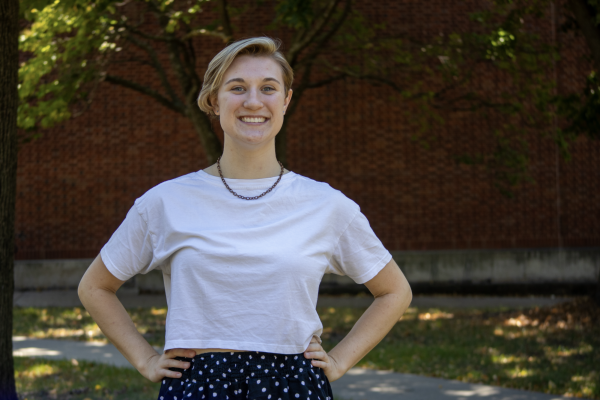Drake students are creating lesson plans designed for middle and elementary school students as part of a grant through the NASA-affiliated Iowa Space Grant Consortium. The materials in question will eventually be piloted in Des Moines-area schools and made available online for teachers to use free of charge.
Last fall semester, Drake STEM Librarian and Assistant Professor of Librarianship Dan Chibnall and Associate Professor of Education Jerrid Kruse discovered a curriculum-writing grant through the ISGC. Though skeptical that the grant would take K-12 curriculum proposals, the pair decided to apply with grant-writing help from Drake’s Sponsored Programs Administration and Research Compliance. October brought news that Drake received two out of the four available grants, and by November, they had gathered a team of students who had exhibited “exceptional work in class,” Kruse said.
According to Kruse, underclassmen were favored over upperclassmen because they can work with educational professors for a greater number of years. All but one of the participants are education majors.
“We also wanted it to be primarily education students because we thought it would be great experience and training for them to build,” Chibnall said. “First of all, they’re either designing lesson plans already or they’re going to be soon, and so this gave them an opportunity to practice their skills at doing this.”
Students are divided into two projects, each funded by a separate grant. The first, “Expanding the STEM Pipeline at the Source: Developing broad scientific literacy in K-12 education,” is developing four astronomy units for middle school students aligned with the Next Generation Science Standards. The second, “Developing Effective Astronomy STEM Units for Middle School Science,” is focused on socioscientific issues and involves six interactive readings targeted at middle schoolers and units aimed at second graders.
The four units of the scientific literacy project include The Earth, Moon and Sun System, Light, Gravity and Gravitational Lensing, Exploring the Solar System, and Engineering and Technology to explore the cosmos. Each lesson plan also fulfills the NASA mission directorates.
“In order for [the students] to do the work, they have to have a deeper understanding of how this stuff works…the Rover Group has learned a ton about what’s going on on Mars and what’s going to happen,” Chibnall said. “Then the light and gravity group has learned a ton about how relativity works because you have to sort of understand you know, relativity is not easy. It’s not easy for even adults or even physicists.”
According to Kruse, standard alignment and student engagement must be delicately balanced. Kruse’s expertise as a former middle school science teacher allows him to provide constructive feedback on the appropriateness of lesson materials.
“We write everything that we can think of down and then see what kind of fits with education, what fits with the grant program, and then figure out a way to make it interesting and fun,” sophomore Brigid Miller said. “And then we check with Dr. Kruse because he’s the one that is actually a teacher.”
The lesson plans are designed to be taught in 30-minute segments over the course of a few weeks, an approach Kruse said offers teachers flexibility.
Miller said that most of the work takes place during weekly two to three hour meetings on Sunday, during which the group exchanges ideas and feedback. Through the grant, students are compensated on an hourly basis.
“We work for anywhere from two to three hours and then the students design the lesson plans, and then we gi

ve them feedback, constructive criticism, give them ideas,” Chibnall said.
Though the Drake students are focused on facilitating learning for their younger counterparts, developing a curriculum has been a learning experience in itself.
“At the end of the day, what’s really important is how are you able to communicate some of this stuff with just anyone that you know,” Chibnall said. “I would argue that that’s a skill that any profession needs, no matter what you do in the world. You need to be able to sit down and to articulate to somebody else, ‘Here’s something that I find interesting or that I care about. Let me tell you about it without boring you to death.’”
Miller said she has learned to “genuinely collaborate” with other students and approach educational preparation in a new light.
“It’s definitely like a different mindset of learning and a different mindset of creating because it’s genuinely for students. It’s not for someone to grade me on it,” Miller said.
Chibnall has encouraged the students to submit their lesson plans and reasoning to an educational journal. Though none of the students are published in a journal, Chibnall said that Drake undergraduate students have published work in the past.
“It sounds scary to say it’s published, but really what it is is just sharing your ideas with the community, hoping that somebody else will find something meaningful and what you did too,” Miller said.







